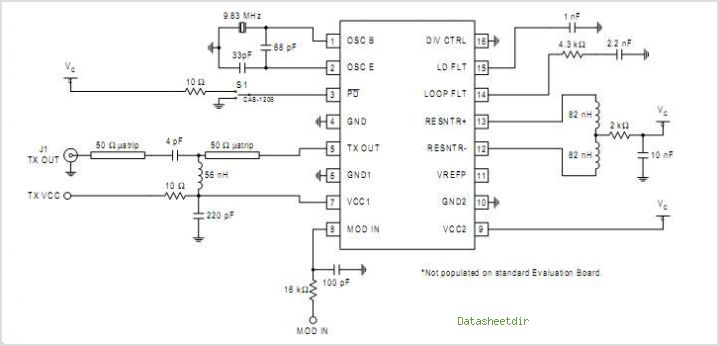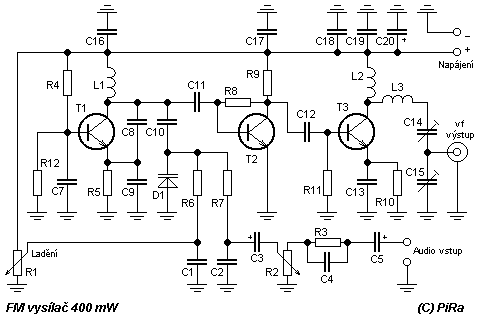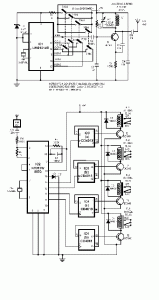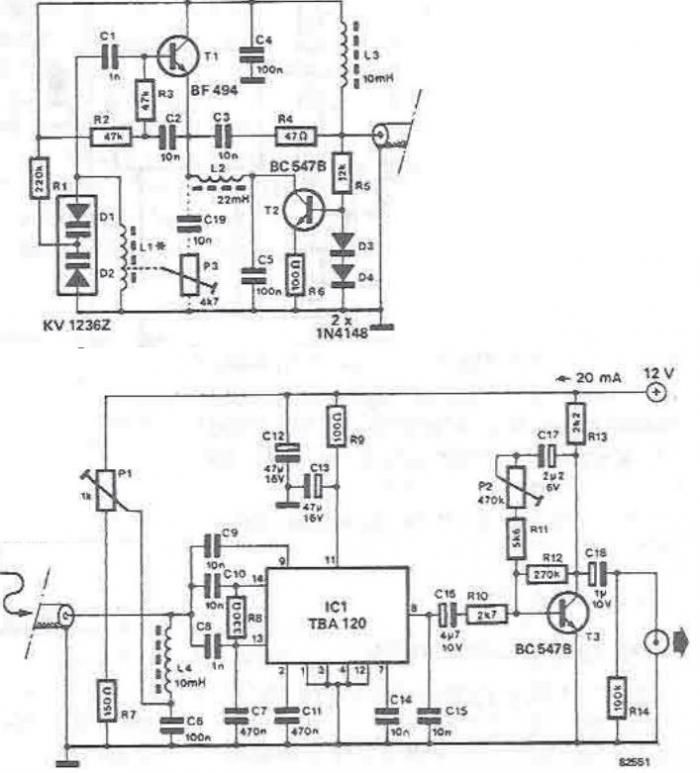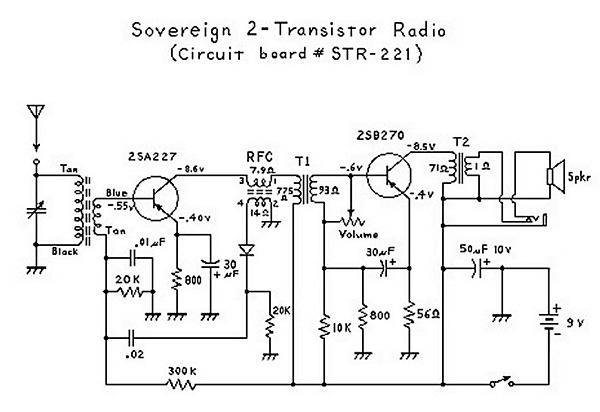
Small Radio Transmitter
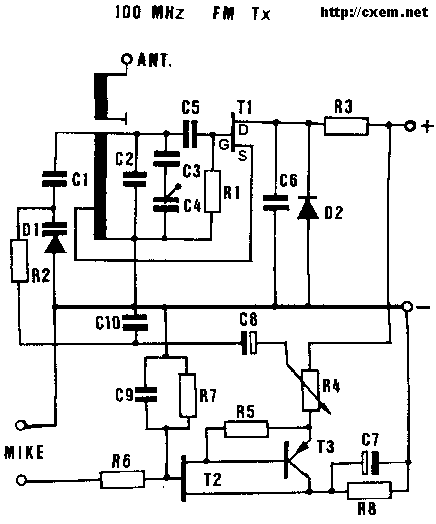
Small Radio Transmitter. This article contains information about building a small radio transmitter, which has a PCB measuring 1.75 x 2.5 inches (45 mm x 68 mm) and offers a range of approximately 30 yards.
The small radio transmitter is designed for basic communication applications and is suitable for hobbyists and educational purposes. The printed circuit board (PCB) dimensions of 1.75 x 2.5 inches (45 mm x 68 mm) allow for compact integration into various projects. The transmitter operates in the FM or AM band, depending on the design specifications, and is capable of broadcasting audio signals wirelessly within a range of approximately 30 yards.
Key components of the transmitter may include an oscillator circuit, which generates the carrier frequency, a modulator circuit to encode the audio signal onto the carrier wave, and an antenna for radiating the signal. The oscillator can be implemented using a simple transistor or an integrated circuit (IC) designed for RF applications. The modulator circuit typically employs a combination of resistors, capacitors, and transistors to ensure proper signal modulation.
Power supply considerations are crucial for the operation of the transmitter. A regulated DC power source, such as batteries or a wall adapter, should be used to ensure stable operation. Additionally, filtering capacitors may be included in the design to reduce noise and improve signal quality.
The antenna design plays a significant role in the effective transmission of signals. A simple wire antenna can be used, with its length adjusted to the frequency of operation to optimize performance. Proper placement of the transmitter and antenna can further enhance the effective range and clarity of the transmitted signal.
Safety precautions should be taken into account, particularly in regard to transmission power levels and frequency regulations to avoid interference with licensed radio communications. Overall, this small radio transmitter project offers a practical introduction to RF design and wireless communication principles.Small Radio Transmitter. This article contains information about building a small radio transmitter, which has a PCB 1.75 x 2.5 (45mm x 68 mm) and has a range of about 30 yards or. 🔗 External reference
The small radio transmitter is designed for basic communication applications and is suitable for hobbyists and educational purposes. The printed circuit board (PCB) dimensions of 1.75 x 2.5 inches (45 mm x 68 mm) allow for compact integration into various projects. The transmitter operates in the FM or AM band, depending on the design specifications, and is capable of broadcasting audio signals wirelessly within a range of approximately 30 yards.
Key components of the transmitter may include an oscillator circuit, which generates the carrier frequency, a modulator circuit to encode the audio signal onto the carrier wave, and an antenna for radiating the signal. The oscillator can be implemented using a simple transistor or an integrated circuit (IC) designed for RF applications. The modulator circuit typically employs a combination of resistors, capacitors, and transistors to ensure proper signal modulation.
Power supply considerations are crucial for the operation of the transmitter. A regulated DC power source, such as batteries or a wall adapter, should be used to ensure stable operation. Additionally, filtering capacitors may be included in the design to reduce noise and improve signal quality.
The antenna design plays a significant role in the effective transmission of signals. A simple wire antenna can be used, with its length adjusted to the frequency of operation to optimize performance. Proper placement of the transmitter and antenna can further enhance the effective range and clarity of the transmitted signal.
Safety precautions should be taken into account, particularly in regard to transmission power levels and frequency regulations to avoid interference with licensed radio communications. Overall, this small radio transmitter project offers a practical introduction to RF design and wireless communication principles.Small Radio Transmitter. This article contains information about building a small radio transmitter, which has a PCB 1.75 x 2.5 (45mm x 68 mm) and has a range of about 30 yards or. 🔗 External reference

